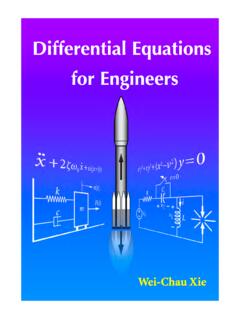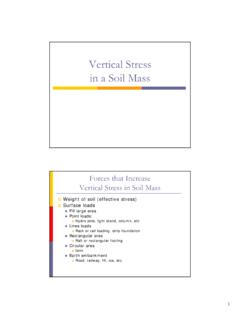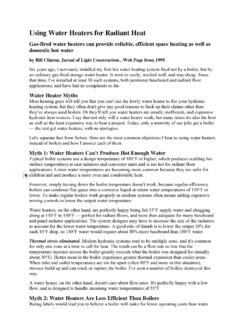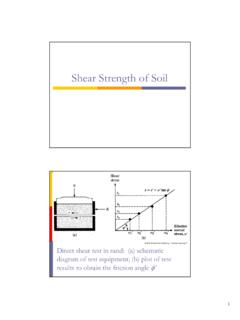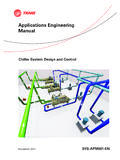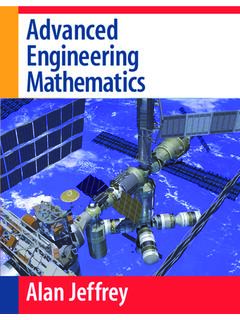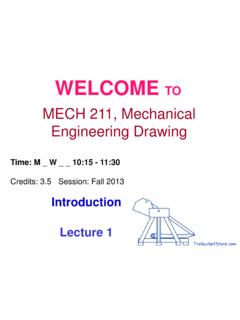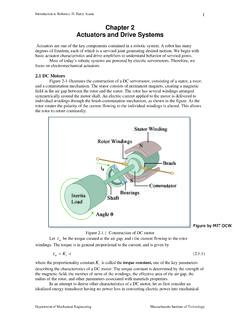Transcription of DIFFERENTIAL EQUATIONS FOR ENGINEERS
1 DIFFERENTIAL EQUATIONS FOR ENGINEERS This book presents a systematic and comprehensive introduction to ordinary DIFFERENTIAL EQUATIONS for engineering students and practitioners. Mathematical concepts and various techniques are presented in a clear, logical, and concise manner. Various visual features are used to highlight focus areas. Complete illustrative diagrams are used to facilitate mathematical modeling of application problems. Readers are motivated by a focus on the relevance of DIFFERENTIAL EQUATIONS through their applications in various engineering disciplines. Studies of various types of DIFFERENTIAL EQUATIONS are determined by engineering applications . Theory and techniques for solving DIFFERENTIAL EQUATIONS are then applied to solve practical engineering problems.
2 Detailed step-by-step analysis is presented to model the engineering problems using DIFFERENTIAL EQUATIONS from physical principles and to solve the DIFFERENTIAL EQUATIONS using the easiest possible method. Such a detailed, step-by-step approach, especially when applied to practical engineering problems, helps the readers to develop problem-solving skills. This book is suitable for use not only as a textbook on ordinary DIFFERENTIAL EQUATIONS for undergraduate students in an engineering program but also as a guide to self-study. It can also be used as a reference after students have completed learning the subject. Wei-Chau Xie is a Professor in the Department of Civil and Environmental engineering and the Department of Applied Mathematics at the University of Waterloo.
3 He is the author of Dynamic Stability of Structures and has published numerous journal articles on dynamic stability, structural dynamics and random vibration, nonlinear dynamics and stochastic mechanics, reliability and safety analysis of engineering systems, and seismic analysis and design of engineering structures. He has been teaching DIFFERENTIAL EQUATIONS to engineering students for almost twenty years. He received the Teaching Excellence Award in 2001 in recognition of his exemplary record of outstanding teaching, concern for students, and commitment to the development and enrichment of engineering education at Waterloo. He is the recipient of the Distinguished Teacher Award in 2007, which is the highest formal recognition given by the University of Waterloo for a superior record of continued excellence in teaching.
4 DIFFERENTIAL EQUATIONS for EngineersWei-Chau XieUniversity of Waterloocambridge university pressCambridge, New York, Melbourne, Madrid, Cape Town, Singapore,S ao Paulo, Delhi, Dubai, TokyoCambridge University Press32 Avenue of the Americas, New York, NY 10013-2473, on this title: Wei-Chau Xie 2010 This publication is in copyright. Subject to statutory exceptionand to the provisions of relevant collective licensing agreements,no reproduction of any part may take place without the writtenpermission of Cambridge University published 2010 Printed in the United States of AmericaA catalog record for this publication is available from the British of Congress Cataloging in Publication dataXie, Wei-Chau, 1964 DIFFERENTIAL EQUATIONS for ENGINEERS / Wei-Chau bibliographical references and 978-0-521-19424-21.
5 DIFFERENTIAL engineering 515352 dc222010001101 ISBN978-0-521-19424-2 HardbackCambridge University Press has no responsibility for thepersistence or accuracy ofURLs for external or third-party InternetWeb sites referred to in this publication and does not guarantee thatany content on such Web sites is, or will remain, accurate Concepts and Definitions62 First-Order and Simple Higher-Order DIFFERENTIAL Method of Separation of of Transformation of DIFFERENTIAL EQUATIONS and Integrating DIFFERENTIAL of Factors by First-Order First-Order DIFFERENTIAL Higher-Order DIFFERENTIAL Immediately Dependent Variable Independent Variable of First-Order and Simple Higher-Order and of a Particle in a Resisting Suspension under Purification in a Application Problems120 Problems1304 Linear DIFFERENTIAL Linear Ordinary DIFFERENTIAL Equation Having Real Distinct Equation Having Complex Equation Having Repeated of Undetermined of of Variation of of Linear
6 DIFFERENTIAL of a Single Degree-of-Freedom Equation of of a Single Degree-of-Freedom Vibration Complementary Vibration Particular of a Vehicle Passing a Speed Application Problems223 Problems2326 The Laplace Transform and Its Laplace Heaviside Step Functions and the Dirac Delta DIFFERENTIAL EQUATIONS Using the Laplace of the Laplace of a Single Degree-of-Freedom on Elastic of Linear DIFFERENTIAL Method of Method of Laplace Matrix of Multiple Degrees-of-Freedom Method of Method of Laplace Matrix Method349 Problems3518 applications of Systems of Linear DIFFERENTIAL Modeling of Mechanical Absorbers or Tuned Mass Electric of a Two-Story Shear Vibration Complementary Vibration General Solutions380 Problems384xcontents9 Series Solutions of DIFFERENTIAL of Power Solution about an Ordinary Solution about a Regular Singular s Equation and Its of Bessel s of Bessel s Solutions of DIFFERENTIAL Solutions of First-Order Initial Value Backward Euler Euler Method Average Slope Runge-Kutta Solutions of Systems of DIFFERENTIAL DIFFERENTIAL DIFFERENTIAL Partial DIFFERENTIAL of Separation of Flexural Motion of Equation of Heat Heat Transient Heat Transient Heat Conduction on a Steady-State Heat Ordinary DIFFERENTIAL EQUATIONS Solutions of DIFFERENTIAL Ordinary
7 DIFFERENTIAL Ordinary DIFFERENTIAL Laplace of Ordinary DIFFERENTIAL Solutions of DIFFERENTIAL Solutions of DIFFERENTIAL Equations517 Problems526 Appendix ATables of Mathematical of Trigonometric of of of Laplace EQUATIONS have wide applications in various engineering and sciencedisciplines. In general, modeling of the variation of a physical quantity, such astemperature,pressure,displacement,velo city,stress,strain,current,voltage,orcon centrationofapollutant,withthechangeofti meorlocation,orbothwouldresult in DIFFERENTIAL EQUATIONS . Similarly, studying the variation of some physicalquantities on other physical quantities would also lead to DIFFERENTIAL fact, many engineering subjects, such as mechanical vibration or structuraldynamics, heat transfer, or theory of electric circuits, are founded on the theory ofdifferential EQUATIONS .
8 It is practically important for ENGINEERS to be able to modelphysical problems using mathematical EQUATIONS ,and then solve these EQUATIONS decades. Most, if not all, of the textbooks are written by mathematicianswith little engineering background. Based on my experience and feedback fromstudents, the following lists some of the gaps frequently seen in current textbooks: Amajorfocusisputonexplainingmathematical conceptsFor ENGINEERS , the purpose of learning the theory of DIFFERENTIAL EQUATIONS isto be able to solve practical problems where DIFFERENTIAL EQUATIONS are engineering students, it is more important to know the applications andtechniquesforsolvingapplicationproble msthantodelveintothenuancesofmathematica l concepts and theorems.
9 Knowing the appropriate applications canmotivate them to study the mathematical concepts and techniques. However,it is much more challenging to model an application problem using physicalprinciplesandthensolvetheresulti ngdifferentialequationsthanitistomerelyc arry out mathematical exercises. Insufficientemphasisisplacedonthestep-by -stepproblemsolvingtechniquesEngineering studentsdonotusuallyhavethesamemathemati calbackgroundand interest as students who major in mathematics. Mathematicians are moreinterested if: (1) there are solutions to a DIFFERENTIAL equation or a system ofdifferential EQUATIONS ; (2) the solutions are unique under a certain set of con-ditions;and(3)thedifferentialequatio nscanbesolved.
10 Ontheotherhand,xiiixivprefaceengineers are more interested in mathematical modeling of a practical problemand actually solving the EQUATIONS to find the solutions using the easiest possiblemethod. Hence, a detailed step-by-step approach, especially applied to practicalengineering problems, helps students to develop problem solving skills. Presentations are usually formula-driven with little variation in visual designItisverydifficulttoattractstudents toreadboringformulaswithoutvariationof presentation. Readers often miss the points of book addresses the needs of engineering students and aims to achieve thefollowing objectives: To motivate students on the relevance of DIFFERENTIAL EQUATIONS in engineeringthrough their applications in various engineering disciplines.
